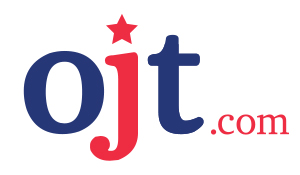Buy American, Hire American
JOIN THE MOVEMENT…
The current administration has stated and reiterated many times its commitment to improving Training in America. This ensures that American businesses and workers are put first.
The President’s economic strategy is to focus on boosting sales of American-made products and hiring more American workers.
According to the administration, reviewing and reforming unfair trade deals and immigration policies that tend to favor foreign businesses and workers over their American counterparts is key to rebuilding the American economy and improving the lives of American workers.
Training America is a BIG PRIORITY
The President has signed an executive order and proposed his plan to combat this problem including:
- An executive order targeting the abuse of waivers and exceptions to “Buy American” laws. According to the administration, abuse of these waivers and exceptions has given a competitive edge to foreign-made products over American-made products.
- Proposing a review and reform of the H1B program to ensure that it is not abused to allow for lower-paid foreign workers to get hired over American workers. The H1B program was established to draw in highly skilled paid labor from around the world but the administration states that about 80% of H1B approved applications were for the lowest wage levels permitted in the program.
One crucial point missing in all this discourse is the issue and importance of training programs and job skills as tools to improve the American economy.
Most experts agree, and research confirms, that focusing on increasing and improving job training program opportunities for workers is the solution to improving some of the key issues affecting American workers.
Job training programs improve worker’s employability and boost their earning capacity. According to the Federal Reserve Chair, Janet Yellen:
“Educational programs and training that lead to better paying and more steady work are crucial for people without college degrees, particularly lower-income workers.”
The current proposed budget, however, cuts federal funding for training programs and transfers the burden of funding to states, localities, and employers.
OJT Supports Manufacturing of American-Made Products
Here at OJT.com, our focus is on state-based training programs, many of them federally-funded, so we are particularly invested in how the proposed budget could affect some of these training programs.
We work with leading-edge training providers in all states to match businesses with the right on-the-job training specific to their industry.
We are cognizant of the effect that federal funding cuts might have on state and local workforce development programs.
For example, shifting the burden of funding to the states may or may not result in program funding cuts, depending on the condition of the state’s budget.
Nevertheless, OJT.com stays committed to making sure that businesses are properly linked up with the appropriate industry-specific training programs that will improve workers’ job skills and, in turn, their companies’ bottom lines.
The proposed cuts in federal funding could have long-term consequences on the economy. According to Heidi Shierholz, former chief economist at the Department of Labor:
“When those programs are cut, that will have an overall detrimental effect. We’ll not be making the important investments we need for productivity growth.”
In the ever-evolving world we live in – with globalization and the constant technological advances – many experts agree that American workers must be equipped with the proper technical and job skills in order to remain competitive on the global scene.
The proposed cuts in federal funding, unless the slack can be taken up at the state level, could reduce the number of skilled labor available.
Many of these programs are beneficial to Americans as they offer crucial services such as:
- upskilling current employees,
- retraining workers for new careers in emerging fields,
- helping unemployed Americans find jobs
- connecting disadvantaged youths from low-income communities with work
According to the Bureau of Labor Statistics, as of April 11th, 2017, the number of job openings was 5.7 million. Between January 2017 and April 2017, some industries saw an increase in the number of job openings including accommodation and food services (+66,000); health care and social assistance (+73,000) as well as finance and insurance (+47,000).
What this means is that employers are actually hiring – which is great news – but it also means that these employers are having a hard time finding enough skilled workers to fill up these positions.
We must mention though that some Federal job training opportunities have had some issues that have to be addressed.
For instance, some workers who lose their job positions due to the effects of free trade, fueled by technological advancements, are retrained for new positions that they do not like or where they earn much less than their previous position.
But this is just one piece of the puzzle and not all job training programs encounter these issues.
OJT.com’s comprehensive database of on-the-job training providers makes it much easier to find training programs for a wide range of much-needed skills to meet the growing demand for skilled workers in various industries.
Job Skills and Training Are Key to Boosting the Skilled Labor Force
In conclusion, it is a widely-accepted fact that job skills and training are key to boosting the skilled labor force and productivity growth.
It is likely that the proposed federal budget, once approved, will reduce funding for important workforce development programs.
It will be up to the 50 states to provide the necessary training and job skills programs to develop highly-demanded skilled labor for the current and future industries most prominent in the state.
Each state is different, so it will be interesting to see how this shakes out.
Instead of a single federal approach, we’ll likely have 50 variations of the federal approach evolve, each with its own nuances, determined by the unique economic climate of the state.


